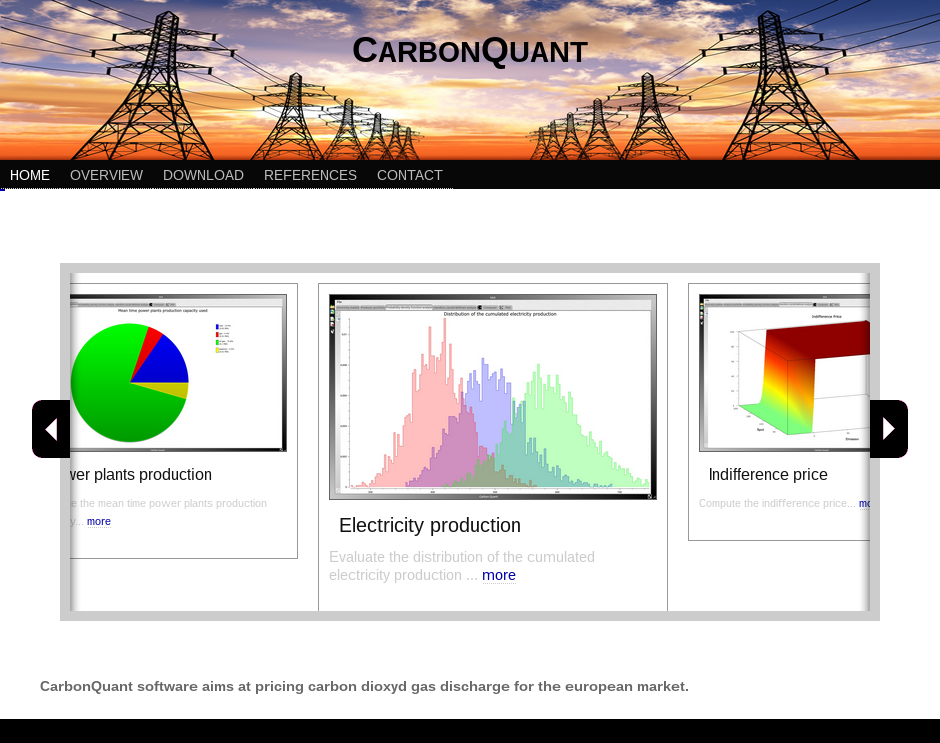Variations of optimum approaches for Carbon pricing
Project manager for the CMA: Nadia MA√ŹZI
 
Since January 2009, in collaboration with the TOSCA team of INRIA, Nadia MA√ŹZI has been working on ADEME-funded research to assess how carbon-financing tools (in particular tax and market) could help to reduce both the volume of CO2 emissions and encourage the deployment of renewable energies.
A pricing demonstrator of CO2 emission permits called Carbon Quant was developed in 2012.
You can find out more on the website http://carbonvalue.gforge.inria.fr
 
This study was carried out in two parts:
-
Short-term carbon value
The European CO2 emission permit market (EU ETS) that has existed since 2005 was designed as a means of supervising and accompanying the reduction in CO2 emissions required by the European Union in certain industry sectors (notably energy production, mineral industries, the metallurgy and paper industries).
It is logical to question the effectiveness of such a scheme as to the actual reductions in CO2 emissions.
The aim of this research is to provide elements to answer this question. The development of the model and its quantitative analysis must in practice provide a tool to analyze behavior in terms of the emissions of an operator (a manufacturer) taking part in the EU ETS. The study of the operator’s awareness of the market parameters would thus be a tool for choosing these parameters in a way that is consistent with the CO2 emission reduction objectives fixed by the regulator.
La modélisation adoptée met l'accent sur le secteur de la production d'électricité. En particulier, il s'agit d'analyser l'impact des énergies renouvelables dans le mix énergétique d'un producteur d'électricité qui doit couvrir annuellement ses émissions de GES ou payer une pénalité.
The adopted modeling puts the emphasis on the power generation industry. It involves analyzing in particular the impact of renewable energies in the energy mix of a power producer that must cover its GHG emissions yearly or pay a penalty. The suggested methodology is based on the concept of indifference price, specially adapted in the context of the EU ETS market. The modeling of strategies for power generation and emissions on the quota market has been established as an optimum stochastic control problem. Associated Hamilton-Jacobi-Bellman equations have been resolved digitally for different electricity spot market prices.
At the same time an approach based on the concept of Nash equilibrium has been developed to couple the electricity spot market and the carbon market by optimizing the power generation of each operator.
 
-
Medium and long-term carbon value
The question of carbon value is central when the discussion focuses on political agendas and that countries and/or regions are preoccupied with climate change. So the dynamic change in carbon value has been explored and quantified for France over several decades. This change is assessed with the help of intertemporal optimization, the base period being 5 years, and allows different values linking the activities and capacities of energy producing technologies with the associated emission to be accessed and thus influence a carbon value reproducing the impacts of these choices.
The results are situated in the upper bracket of the values given by other approaches and other scales but covering the same area of study. It has also been shown that the French carbon value established by the Quinet report corresponds to a combination of optimistic hypotheses: the central estimate is 4 times higher than the Quinet value of 2050 and 14 times higher in 2020, which reflects the expensive short-term inertia. It has also been determined that this value is very sensitive to intermediary objectives and the way it varies over time.
This research was published.








